 |
 |
 |
| |
COVID-19 Disrupts PrEP Starts, Refills,
HIV/STI Testing in Boston Clinic
|
| |
| |
AIDS 2020: 23rd International AIDS Conference Virtual, July 6-10, 2020
Download the PDF here
Mark Mascolini
"Major disruptions" in PrEP starts and refills, as well as HIV and sexually transmitted infection (STI) testing, followed the onset of the COVID-19 epidemic at a big Boston clinic with a large population of men who have sex with men (MSM) [1]. A near-complete shift from in-person patient care to telehealth did not smooth out the PrEP and testing hitches.
Massachusetts recorded its first COVID-19 cases in March 2020, and a surge followed in April. Researchers working with Boston's Fenway Health aimed to assess the impact of COVID-19 on PrEP care and related factors in Boston from January 1 through April 30, 2020.
Fenway's PrEP cohort includes 3520 people, 92% of them cisgender male, with smaller percentages identifying as genderqueer, transgender female, cisgender female, and transgender male. These people average 36.9 years in age, 72.7% are white, 6.3% Asian, 5.9% black, and 13.6% Hispanic.
Lapses in PrEP refills surged by 191% in the study period, climbing from 140 on January 20 to 407 on April 20. New PrEP starts slipped 72% from 122 on January 20 to 34 on April 20. Combining these two trends, the researchers found that the total number of people with an active PrEP prescription dipped by 18.3%, from 3197 on January 20 to 2984 on April 20.
Over the same period HIV tests ordered sank 85%, from 1014 on January 20 to 151 on April 20. Combined tests for gonorrhea and chlamydia plunged 85%, from 1058 on January 20 to 158 on April 20. In January 33.1% of the study group got tested for gonorrhea and chlamydia, in February 26.9%, in March 19.8%, and in April 6.0%. The number of positive gonorrhea/chlamydia tests fell by 80.7% from January through April. But the percentage of gonorrhea/chlamydia tests that came back positive rose by 3.5% from January through April, from 12.3% to 15.8%.
The number of in-person patient visits collapsed from 1419 in January, to 1183 in February, to 737 in March, to 24 in April. Telehealth visits almost filled the gap, jumping from none in January or February to 380 in March, and to 1022 in April.
The researchers pointed out that in this study group they could not track changes in sexual or pill-taking behaviors. But in a survey of 1051 US MSM, half had fewer sex partners after COVID-19 arrived, and most reported no barriers to PrEP [2]. In a 394-person nationwide US study also reported at AIDS 2020, 90% of PrEP users reported no sex or less sex during the COVID-19 epidemic, and one third stopped PrEP [3].
The Fenway team concluded that "COVID-19 was associated with major disruptions in PrEP refills, new starts, and HIV/STI testing, despite [a] near-complete shift to telehealth."
References
1. Krakower DS, Solleveld P, Levine K, Mayer KH. Impact of COVID-19 on HIV preexposure prophylaxis care at a Boston community health center. AIDS 2020: 23rd International AIDS Conference Virtual. July 6-10, 2020. Abstract OACLB0104.
2. Sanchez TH, Zlotorzynska M, Rai M, Baral SD. Characterizing the impact of COVID-19 on Men Who Have Sex with Men Across the United States in April, 2020. AIDS Behav. 2020;24:2024-2032. doi: 10.1007/s10461-020-02894-2. https://www.ncbi.nlm.nih.gov/pmc/articles/PMC7189633/
3. Brawley S, Dinger J, Nguyen C, Anderson J. Impact of COVID-19 related shelter-in-place orders on PrEP access, usage and HIV risk behaviors in the United States. AIDS 2020: 23rd International AIDS Conference Virtual. July 6-10, 2020. Abstract OADLB0101.
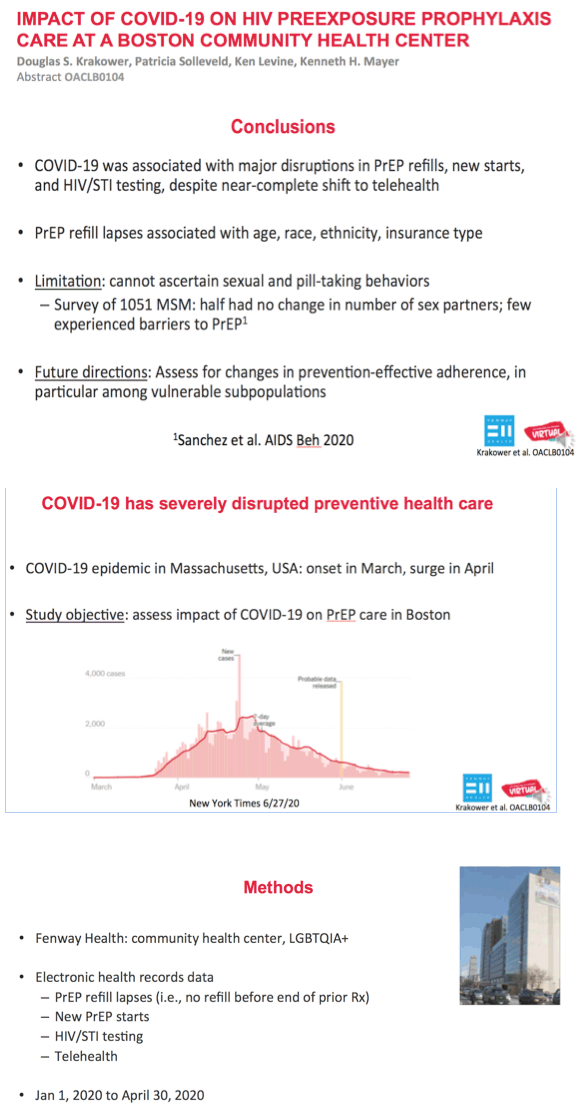
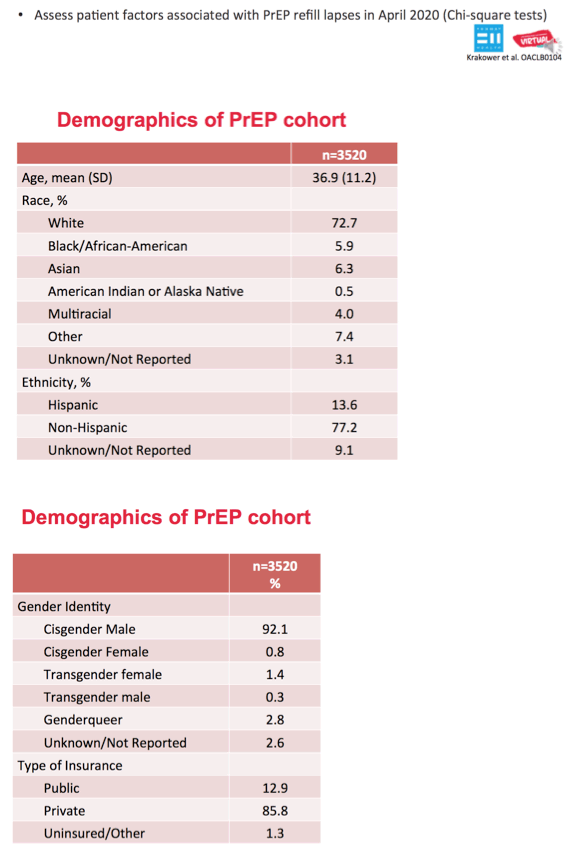
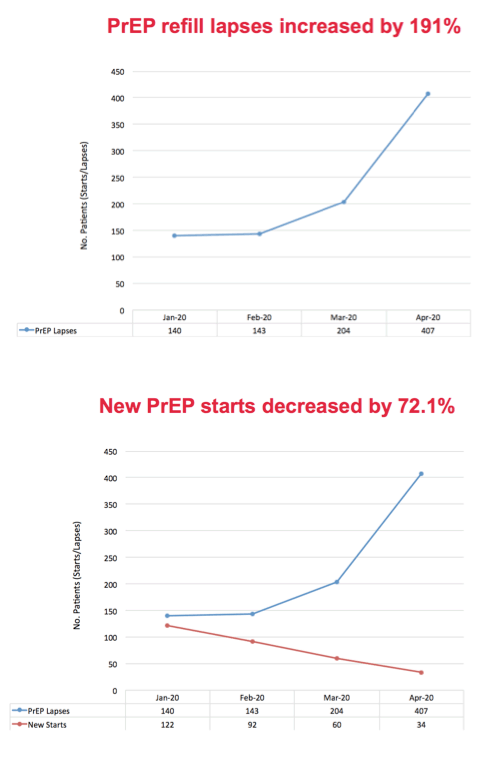
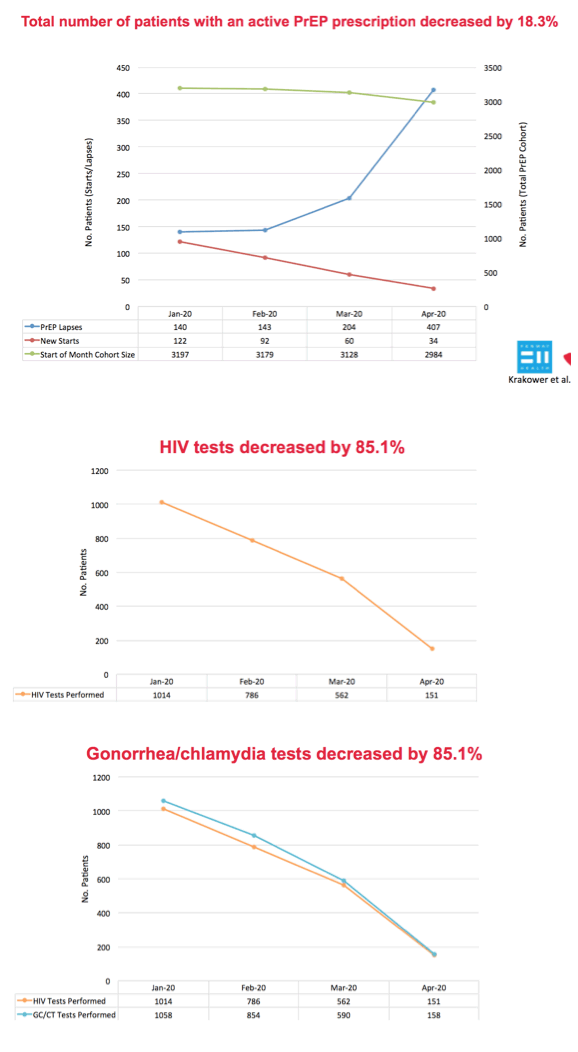
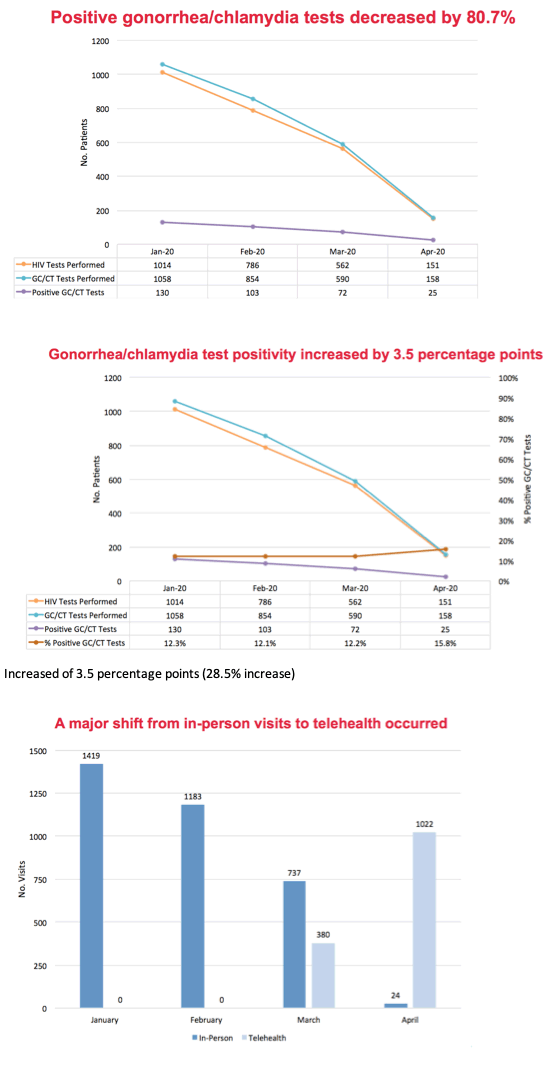
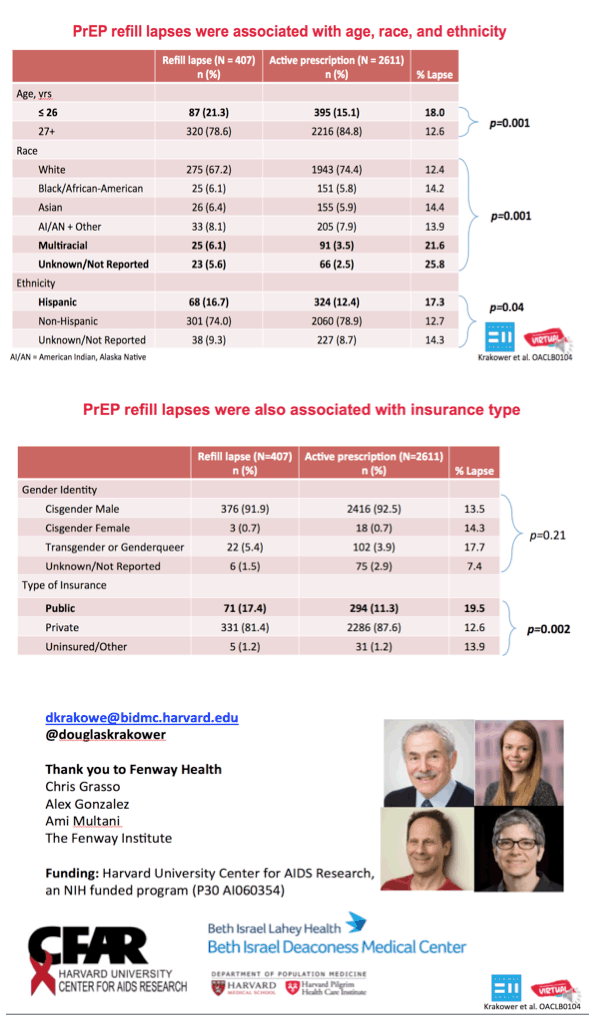
|
| |
|
 |
 |
|
|